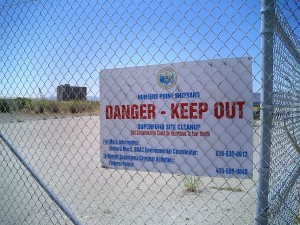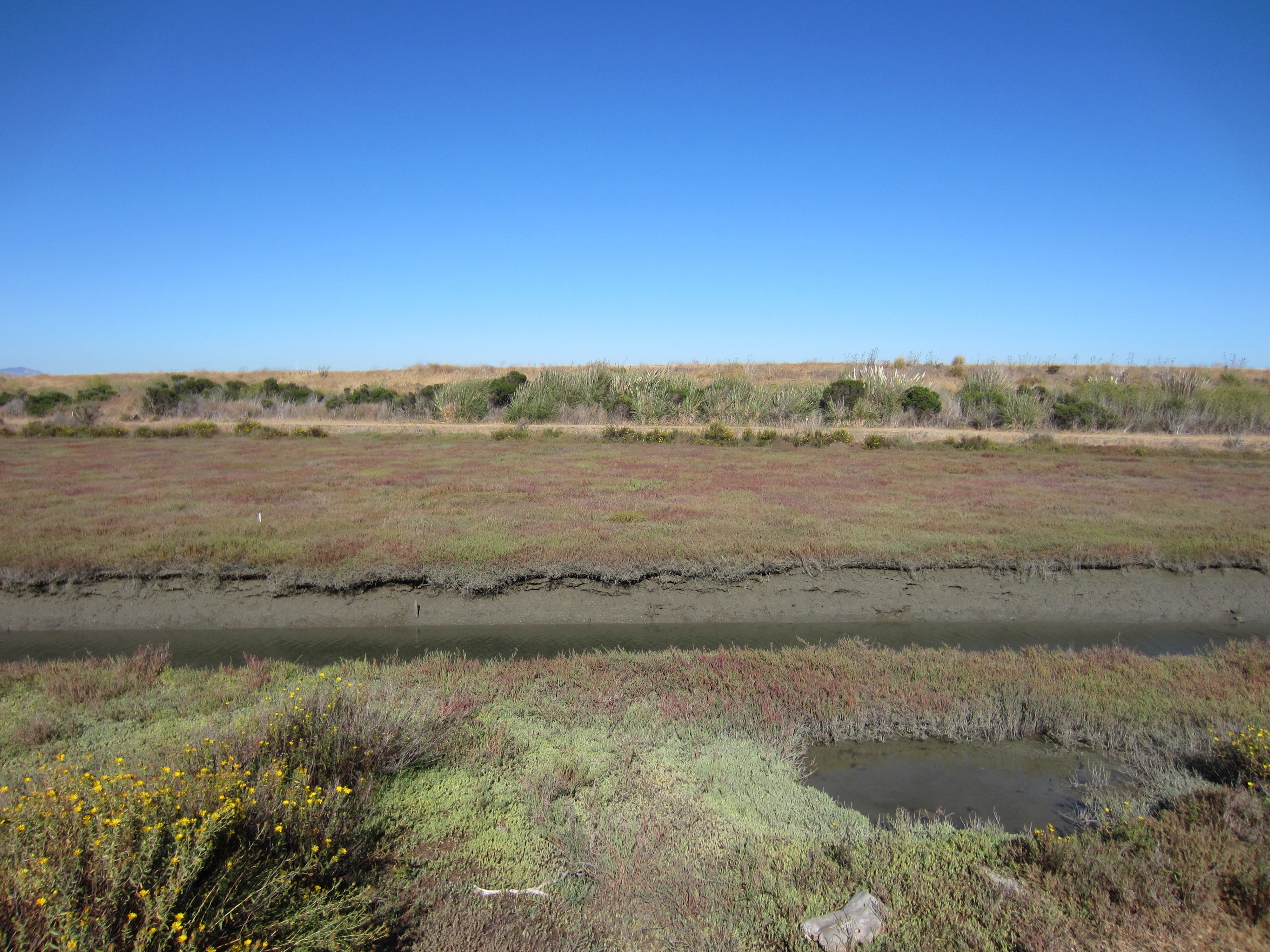
Photo credit: Todd Lappin
Around the Bay Area, many of the landfills are located near the shoreline, or even form the current shoreline itself where they were historically placed as Bay fill. Many closed landfills have been converted to shoreline park and recreation areas. Other types of contaminated land sites are concentrated in former industrial areas, and are often located in or adjacent to socially disadvantaged communities. The extent to which brownfield sites are cleaned up depends on the sites’ current land use designation or on its proposed site reuse.
Key Findings
Sea level rise and storm events may cause flooding or groundwater intrusion to contaminated sites and landfill waste containment systems. Temporary or permanent surface flooding, erosive tidal or wave energy, and elevated groundwater levels could cause the release of hazardous substances with potentially significant consequences on public health, the environment, and the local economy. Consequences vary depending on the characteristics of the waste (i.e. toxicity and quantity) and the sensitivity of the people or environments potentially affected.
While there have been many advances in the field of remediating contaminated sites, most clean up practices are not designed for sea level rise or changing groundwater conditions. Cleanup standards for contaminated sites vary, and if an upland site becomes aquatic as sea level rises, it will not have been remediated to a high enough standard. The Regional Water Quality Control Board requires landfills located adjacent to the Bay, rivers or the ocean submit a long-term flood protection plan when updating existing Waste Discharge Requirements (WDRs). While this requirement provides opportunity to address sea level rise, WDRs are not updated frequently. The management of landfills, brownfields, and contaminated sites in general are geared towards site-specific actions.
Multiple agencies and databases track contaminated sites differently, making it difficult to understand their location and condition. To address this, agencies that regulate or manage contaminated lands should establish agreements to use consistent data collection and management methods, and to develop and keep current a centralized information system with critical emergency and adaptation planning information. To facilitate the coordination and communication on Brownfield issues, the Department of Toxic Substances Control, State Water Resources Control Board, and the Regional Water Quality Control Boards have a Memorandum of Agreement that defines how a lead agency is assigned and specifies that cleanups address the requirements of both agencies (https://www.waterboards.ca.gov/water_issues/programs/Brownfields/).

West Winton Landfill. Photo credit: BCDC
Due to technical challenges, environmental risks, and funding issues, some contaminated sites are likely to be remediated in place, making them vulnerable to storm event flooding and rising groundwater until cleanup is complete. Most contaminated lands are privately owned and many are not appropriate for redevelopment, and there are few financial incentives to remediate these sites. This creates a situation in which there are no regulatory triggers or funding mechanisms to initiate planning and prioritizing sites for clean-up with consideration for sea level rise and storm event impacts. Where property owners cannot be found or do not have the necessary resources, the cleanup process is delayed and public funds are the only source of financing. Studies of individual sites or clusters of sites to better understand the timing and degree of vulnerability and consequences would support development of remediation efforts that are designed, funded, permitted, and prioritized for cleanup in a manner that addresses sea level rise, storm events, and elevated groundwater impacts.
Project Findings and Materials
- These materials were developed as part of location specific projects conducted in various parts of the Bay, however the issues observed and the lessons learned are broadly applicable to other areas of the Bay and other regions around the country.
- Alameda County Profile Sheet: Contaminated Lands

- Alameda County Existing Conditions and Stressors: Contaminated Lands

- Alameda County Vulnerability and Risk: Contaminated Lands

- Contra Costa County Contaminated Lands Chapter

- Findings: Hazardous Materials
External resources

For more information:
- Nick Sander
- Nicolas.Sander@bcdc.ca.gov
- 415-352-3625